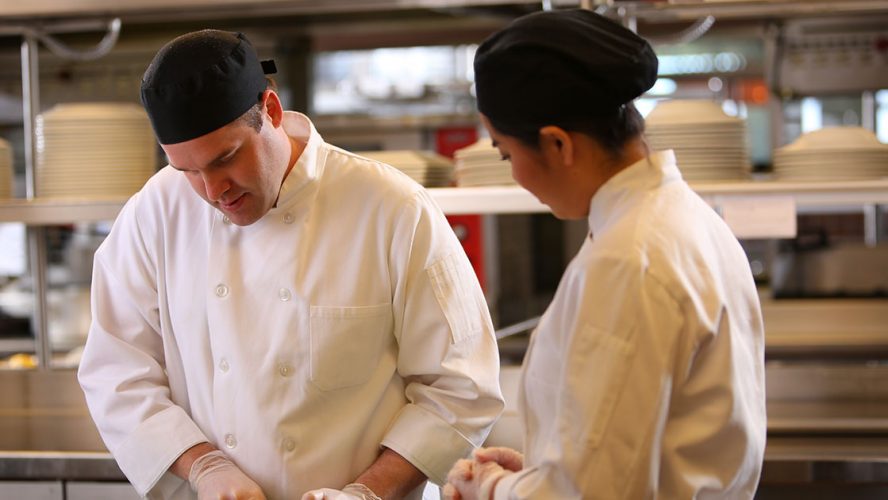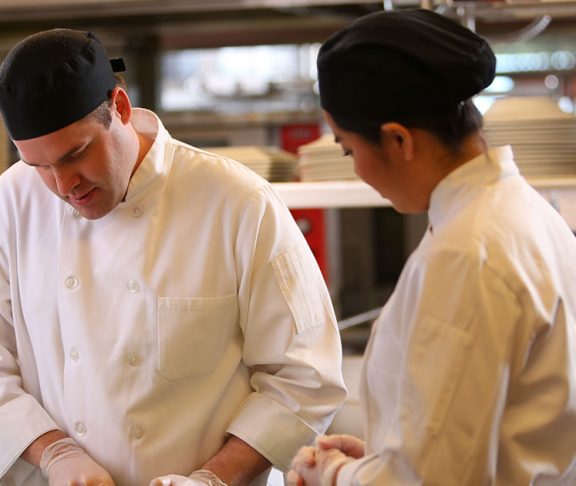We’re living in a time when people can track every aspect of their lives, from restaurants visited to steps taken in a day. Unsurprisingly, people want to apply that same data-rich lifestyle to the food they eat. National Food Safety Month (established by the National Restaurant Association and managed by ServSafe in 1994), is putting a spotlight on food safety, an arena where technological advances combined with revised regulatory procedures means the future is all about the data.
Tracing from the source
The future of food safety starts with something from the past: the bar code. Ubiquitous in the food industry, new technological advancements are poised to make it more powerful.
“The traditional barcode really just uniquely identifies the product,” says Angela Fernandez, vice president of Foodservice and Retail Grocery at GS1 US, which develops and maintains global standards for business communication. “Today’s barcode also supplies information such as the batch or lot information, harvest dates and use-by dates, enabling greater traceability.”
Traceability — the ability to see where food was sourced — has grown in importance as the worldwide food supply network becomes increasingly complex.
“Our standards are enabling external traceability,” Fernandez says. “A farmer servicing a local restaurant can share information in a standardized way so that the restaurant can bring it into their system and be able to connect all of the different touch points.” This means problems can be quickly traced to their origins, reducing risk and increasing efficiency. Roadblocks to these goals remain, however, as dated warehouse systems need to be upgraded. While almost all warehouse management systems can read the barcodes, Fernandez points out not all warehouse systems can actually store the rich data in the system, rendering it useless.
Enforcing food safety
Food safety is just as important once inside the restaurant or grocery store. Vito Palazzolo, manager of Food Safety and Regulatory Relations at the National Restaurant Association, notes that the roles played by inspectors and the Food and Drug Administration (FDA) have evolved to fit modern times. “We’ve gone from a demerit-type approach — finding what’s wrong with everything — to one of education, with the FDA being a partner to the restaurant industry.”
ServSafe sees two major components to the future of food safety: The adoption of active managerial control (AMC) (an approach to food safety that stresses risk-based preventative control practices) and the further implementation of the Food Safety Modernization Act of 2011 (FSMA) — legislation that puts significant stress on the prevention of food-borne illness by controlling risks in the food supply.
“There are local health departments requiring training almost like a certified manager,” Palazzolo says of AMC. “FSMA started in the manufacturing sector, but I think as time goes on it’s going to filter down to the restaurant industry. A proactive C-suite or managerial team should be preparing for these two scenarios right now.”
Communication from the top down is vital, though; Palazzolo notes studies continue to show that the five risk factors for the food industry identified by the CDC (food from unsafe sources, poor personal hygiene, inadequate cooking, improper storage and contaminated equipment) remain a problem, in part due to a lack of stress from managers. “Unfortunately,” he says, “these fundamentals are still issues that contribute to foodborne illnesses today.”
The good news is that these new, powerful tools are being brought to bear on the problem, ensuring that future generations of Americans will be able to enjoy the bounty our country produces — from the farm to the fork.


